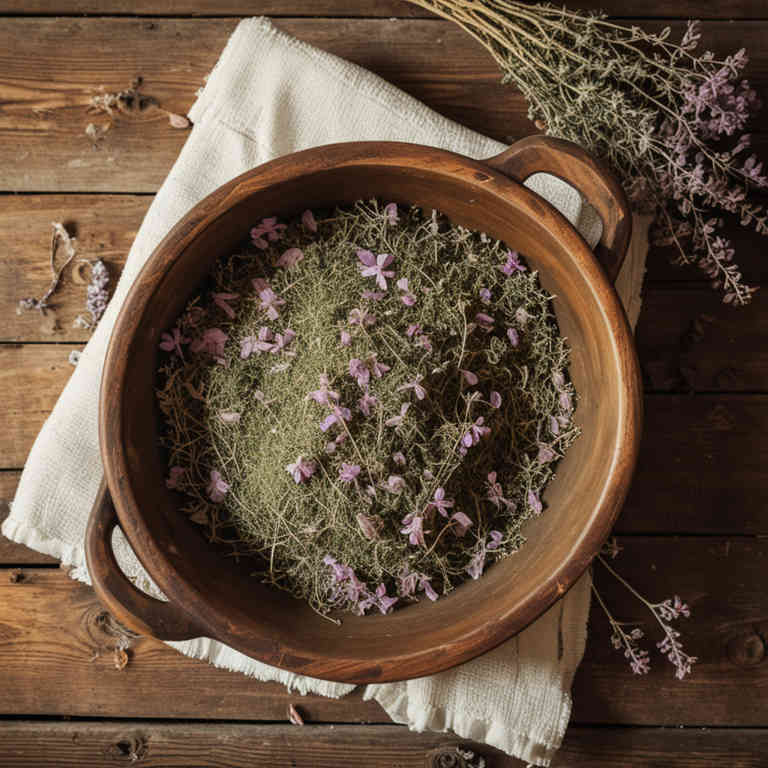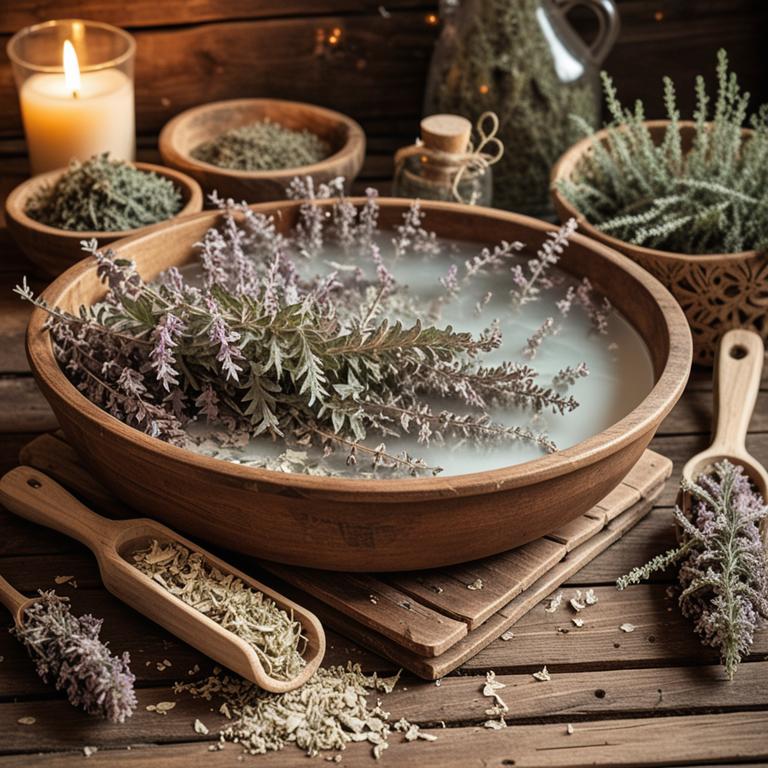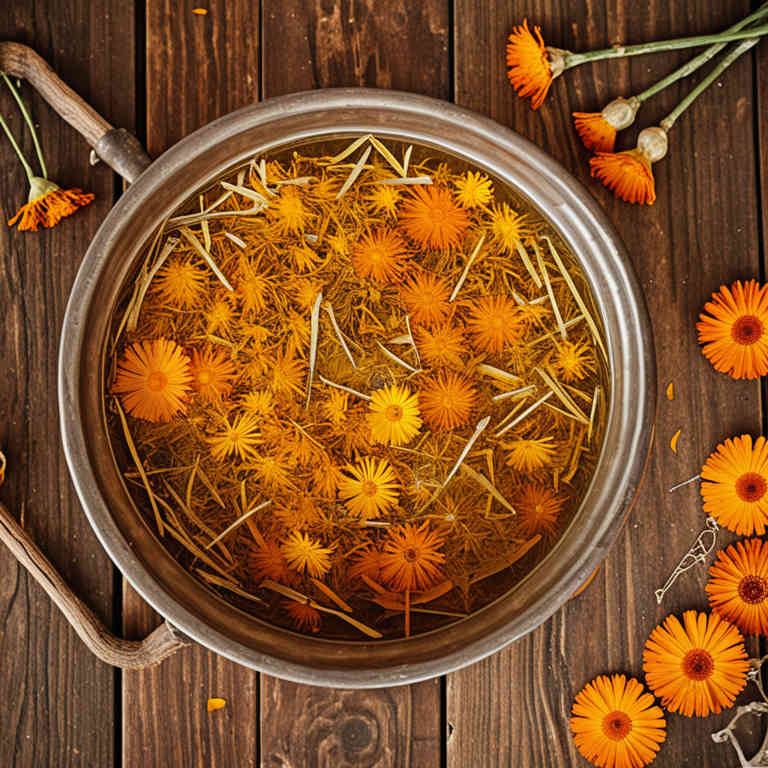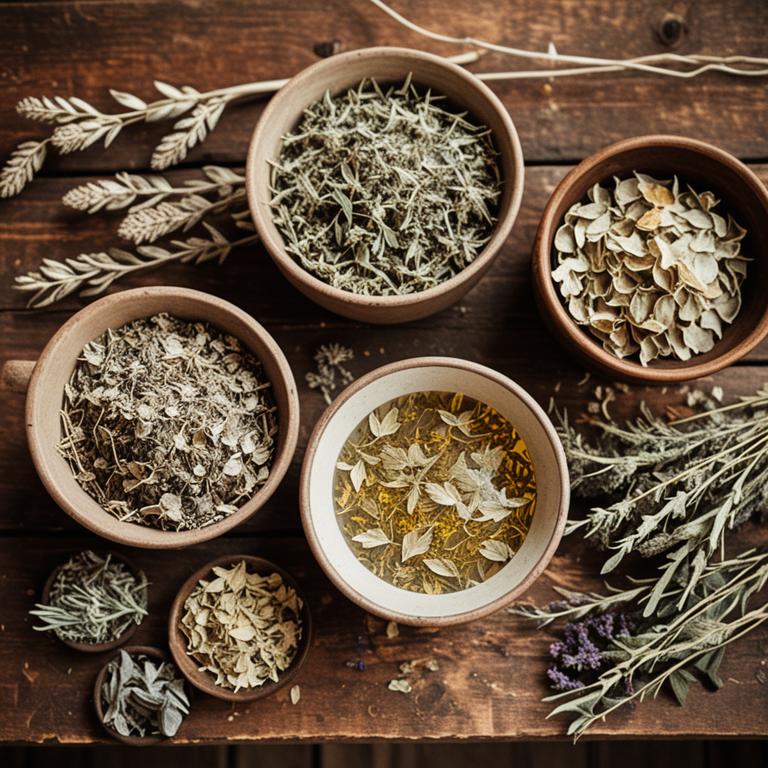10 Best Herbal Baths For Jock Itch

Herbal baths can be a natural and soothing remedy for jock itch, a fungal infection that commonly affects the groin area.
Certain herbs, such as garlic, tea tree oil, and calendula, possess antifungal and anti-inflammatory properties that may help alleviate symptoms and promote healing. To prepare an herbal bath, these ingredients can be steeped in warm water to create a soothing soak for the affected area. It is important to ensure the bath is not too hot and to keep the skin dry afterward to prevent further irritation.
While herbal baths may offer relief, they should be used in conjunction with proper hygiene and, if necessary, a healthcare provider's guidance for effective treatment.
FREE Herb Drying Checklist
How to make sure every batch retains maximum flavor, color, and aroma without the risk of mold or over-drying. Eliminate guesswork and trial-and-error, making herb drying faster, easier, and more efficient every time.
Table of Contents
1. Equisetum arvense

Equisetum arvense, commonly known as horsetail, has been traditionally used in herbal baths for its high silica content and antimicrobial properties, which may help alleviate symptoms of jock itch.
When used in a warm bath, horsetail can soothe irritated skin and reduce fungal growth, making it a natural alternative to conventional treatments. The astringent properties of horsetail may help tighten the skin and prevent further fungal invasion. To prepare the bath, fresh or dried horsetail can be boiled and strained, then added to warm water for soaking.
While it may provide relief, it is advisable to consult a healthcare professional before using horsetail baths, especially for persistent or severe cases of jock itch.
2. Hypericum perforatum

Hypericum perforatum, commonly known as St. John's Wort, has been traditionally used in herbal baths for its potential antifungal and anti-inflammatory properties.
When infused into warm water, it can create a soothing bath that may help alleviate symptoms of jock itch, such as itching and redness. The active compounds in Hypericum perforatum, including hypericin and hyperforin, are believed to have antimicrobial effects that may inhibit the growth of fungi like Trichophyton, which often cause jock itch. However, it is important to consult a healthcare provider before using St. John's Wort, as it can interact with certain medications.
While herbal baths may provide some relief, they should not replace medical treatment for persistent or severe cases of jock itch.
3. Urtica dioica

Urtica dioica, commonly known as stinging nettle, has been traditionally used in herbal baths for its anti-inflammatory and antifungal properties, which may help alleviate symptoms of jock itch.
When prepared as a bath, the leaves of urtica dioica can be boiled and strained to create a soothing solution that can be added to warm water for soaking. The high concentration of silica and antioxidants in stinging nettle may help reduce skin irritation and promote healing in affected areas. However, it is important to note that while some individuals may find relief using this natural remedy, it should not replace conventional medical treatments for fungal infections like jock itch.
Always consult a healthcare provider before using herbal remedies, especially if symptoms persist or worsen.
4. Rosmarinus officinalis

Rosmarinus officinalis, commonly known as rosemary, has been traditionally used for its antimicrobial and anti-inflammatory properties, making it a potential natural remedy for jock itch.
When used in herbal baths, rosemary can help soothe irritated skin and reduce fungal growth, which is a common cause of jock itch. To prepare a rosemary bath, fresh or dried rosemary can be steeped in hot water and then used to soak the affected area for 15 to 20 minutes. The essential oils in rosemary may also provide a calming effect, promoting overall skin health.
However, it is advisable to consult a healthcare professional before using rosemary baths, especially if the condition persists or worsens.
5. Achillea millefolium

Achillea millefolium, commonly known as yarrow, has been traditionally used for its anti-inflammatory and antifungal properties, making it a potential natural remedy for jock itch.
When used in herbal baths, yarrow can help soothe the skin and reduce itching caused by fungal infections. To prepare a yarrow bath, steep a handful of dried yarrow flowers in boiling water for about 15 minutes, then allow the liquid to cool before using it as a bath. The astringent properties of yarrow may help dry out the affected area and promote healing.
While herbal baths can offer relief, they should not replace medical treatment for severe or persistent jock itch, and consulting a healthcare professional is recommended.
6. Lavandula angustifolia

Lavandula angustifolia, commonly known as English lavender, has been traditionally used for its soothing and antifungal properties, making it a valuable ingredient in herbal baths for jock itch.
The essential oils in lavender, particularly linalool and lavandic acid, possess antimicrobial and anti-inflammatory effects that can help reduce the symptoms of fungal infections like jock itch. To prepare an herbal bath, lavender can be steeped in hot water and added to a tub, allowing the skin to absorb its therapeutic properties. Regular use of lavender-infused baths may help alleviate itching, redness, and discomfort associated with jock itch.
While it can be a complementary therapy, it is important to consult a healthcare provider for proper diagnosis and treatment, especially if the condition persists or worsens.
7. Thymus vulgaris

Thymus vulgaris, commonly known as thyme, has been traditionally used in herbal remedies for its antimicrobial and antifungal properties, making it a potential natural remedy for jock itch.
When used in herbal baths, thyme can help reduce fungal growth and alleviate the itching and discomfort associated with the condition. To prepare a thyme bath, a handful of dried thyme can be steeped in hot water for several minutes, then strained and added to a warm bath. Soaking in the bath for 15 to 20 minutes may help soothe the affected area and promote healing.
However, it is important to consult a healthcare professional before using thyme baths, especially if the condition persists or worsens.
8. Teucrium polium

Teucrium polium, also known as the "summer savory" herb, has been traditionally used in herbal medicine for its anti-inflammatory and antifungal properties.
When used in herbal baths, it can help soothe the skin and reduce the symptoms of jock itch, a fungal infection caused by dermatophytes. To prepare the bath, a handful of dried Teucrium polium leaves can be steeped in hot water and then used to soak the affected area for 15 to 20 minutes. This natural remedy may help alleviate itching, redness, and irritation associated with jock itch.
However, it is advisable to consult a healthcare professional before using it as a treatment, especially if the infection persists or worsens.
9. Calendula officinalis

Calendula officinalis, commonly known as garden marigold, is a herbal remedy that has been traditionally used for its anti-inflammatory and antifungal properties.
When used in herbal baths, calendula can help soothe the skin and may provide relief from the irritation associated with jock itch. The active compounds in calendula, such as flavonoids and triterpenes, are believed to support skin health and combat fungal infections. To prepare a calendula bath, steep dried calendula flowers in hot water and allow the solution to cool before soaking the affected area.
While calendula baths can be a soothing complementary treatment, they should not replace medical advice or prescribed antifungal medications for persistent or severe cases of jock itch.
10. Satureja hortensis

Satureja hortensis, commonly known as summer savory, has been traditionally used in herbal medicine for its antimicrobial and anti-inflammatory properties.
When infused into a bath, it can help soothe the symptoms of jock itch by reducing fungal growth and irritation. The essential oils in satureja hortensis, such as thymol and carvacrol, are known to inhibit the growth of dermatophytes, the fungi responsible for jock itch. To prepare the bath, a few tablespoons of dried summer savory can be steeped in hot water and then added to a warm bath for soaking.
Regular use of satureja hortensis herbal baths may provide a natural and soothing alternative to conventional treatments for this fungal infection.